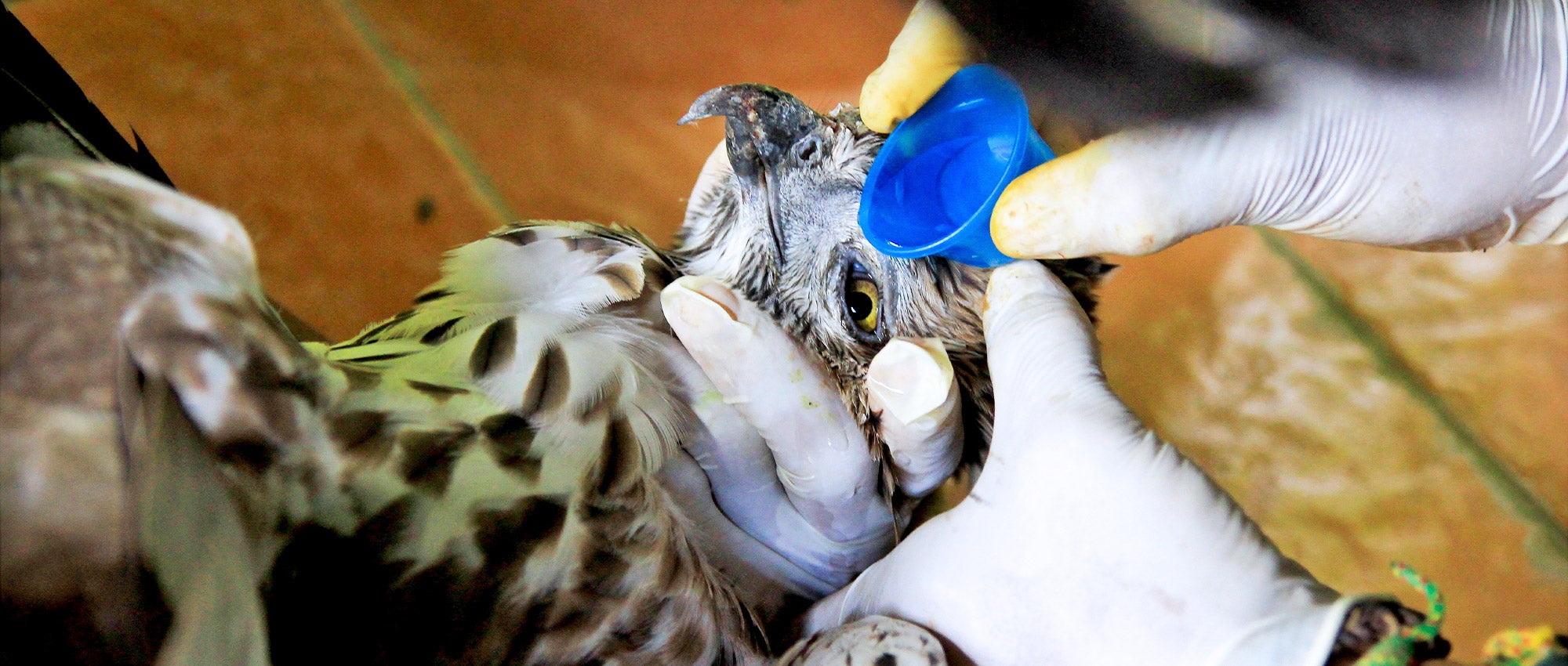The Duty of Humane Wildlife Removal in Protecting Local Ecosystems
Humane wildlife removal is not merely an ethical consideration yet a crucial element in securing neighborhood ecological communities. By focusing on non-lethal methods, it deals with the delicate equilibrium between human expansion and wild animals environment preservation. This approach not just minimizes problems but likewise makes certain the sustainability of biodiversity. Yet, the effectiveness of these approaches warrants further examination, particularly in city settings where human-wildlife communications are progressively complicated. As we consider the ramifications of our techniques and their influence on ecological harmony, one need to wonder about just how these techniques can be maximized to promote a much more cooperative connection with nature.
Recognizing Human-Wildlife Disputes
Human-wildlife disputes usually arise when the natural environments of animals converge with human activities, causing competitors for sources and area. As urbanization and agricultural growth proceed to encroach upon wild animals areas, animals such as coyotes, raccoons, and deer find themselves in closer closeness to human populations. This proximity can lead to damaging effect on both wildlife and people, as animals might cause damages to plants, framework, and personal effects while humans may inadvertently hurt wild animals via habitat devastation and various other anthropogenic pressures.
The intricacy of these disputes originates from an array of elements. Modifications in land use, environment modification, and the fragmentation of ecosystems usually require wildlife to adapt to new environments, often leading them right into residential or business locations. Furthermore, the schedule of human-generated food sources, such as rubbish and family pet food, can draw in wild animals to human settlements, exacerbating interactions and potential disputes.
Resolving human-wildlife problems requires a nuanced understanding of animal behavior, ecological dynamics, and socio-economic factors to consider. By examining these policymakers, conservationists and communications can develop methods that intend to mitigate conflicts while protecting biodiversity and maintaining ecological equilibrium. The objective is to cultivate conjunction and reduce unfavorable effect on both human communities and wild animals populations.
Importance of Non-Lethal Techniques
Reducing human-wildlife conflicts demands techniques that prioritize the health of both animals and humans. Non-lethal techniques of wildlife elimination personify this ethos by giving remedies that protect against injury to wildlife while addressing human concerns. These methods include exclusion methods, habitat adjustment, and using deterrents to inhibit wildlife from entering human settings (animal control Burlington). By utilizing such strategies, we can handle wild animals communications without considering deadly actions, thereby maintaining animal populaces and lowering honest worries connected with killing.
These techniques often prove more efficient in the long term, as getting rid of individual pets can produce a space that is swiftly filled by other participants of the varieties or various types entirely. This can lead to a cycle of recurring removal initiatives, whereas non-lethal deterrents resolve the root causes of wildlife visibility.
In addition, non-lethal methods foster conjunction by informing the public concerning wildlife actions and motivating harmonious living methods. This recognition can bring about much more sustainable human-wildlife interactions, eventually guarding both area passions and animal welfare.
Advantages for Biodiversity
When non-lethal wild animals removal techniques are used, they contribute considerably to biodiversity preservation. By making sure the secure moving of animals as opposed to their obliteration, these methods maintain eco-friendly equilibrium and safeguard the honesty of environments. Gentle techniques lessen disruptions to local animals, allowing native types to prosper. This conservation is vital as each varieties plays a special role, commonly as pollinators, predators, or prey, which collectively maintain community functionality.

Additionally, these approaches cultivate conjunction in between humans and wildlife, minimizing unfavorable interactions and preserving the abundant tapestry of life that defines biodiverse regions. This method encourages a much deeper understanding and respect for wild animals, cultivating neighborhood support for conservation initiatives. Eventually, gentle wild animals elimination is a vital part in protecting biodiversity, guaranteeing environments remain functional and vivid for future generations.
Strategies for Reliable Removal
Carrying out effective strategies for gentle wild animals removal requires a comprehensive understanding of pet actions and environment needs. This knowledge offers as the structure for developing techniques that ensure the honest and secure relocation of wildlife. One main method includes performing extensive assessments of the afflicted location to determine the species existing and the specific difficulties they posture. This evaluation assists in designing tailored techniques that decrease stress and damage to the animals.
An additional important strategy is using exemption strategies, which focus on sealing access indicate protect against animals from going back to structures. This technique not only deals with the instant issue but also acts as a long-term remedy, minimizing future disputes between people and wildlife. Furthermore, using safe deterrents and repellents can urge pets to abandon areas voluntarily, enhancing various other removal efforts.
Capture look at this now and moving should always be a last hope, utilized only when pets pose a direct danger or are incapable to leave by themselves. In such instances, utilizing gentle traps and making certain the release of animals in appropriate habitats are vital to safeguarding their welfare. Collaboration with wildlife experts and adherence to lawful regulations even more boost the effectiveness of these approaches.

Supporting Conjunction in Urban Locations
Promoting coexistence in city locations needs a diverse approach that balances human development with the needs of local wild animals. As urbanization remains to expand, it is important to execute approaches that reduce human-wildlife conflicts while protecting biodiversity. Urban organizers and policymakers should incorporate eco-friendly spaces, such as parks and wild animals corridors, right into city layouts to give environments for native types. These areas not only support wild animals however additionally enhance the top quality of city life by enhancing air top quality and offering entertainment areas for homeowners.
Education and learning and awareness campaigns are essential in promoting a society of coexistence. Residents need to recognize the value of wildlife and the role they play in local communities. Workshops and informative sessions can furnish areas with expertise on just how to minimize disputes, such as protecting trash and using humane deterrents to avoid wildlife breach.
Furthermore, technology can play a considerable function in advertising conjunction. The use of wildlife tracking systems, as an example, can aid track animal movements and educate metropolitan planning decisions. Collaborations between environmental organizations, regional governments, and area teams can better enhance these initiatives, making sure that metropolitan growth progresses sustainably while appreciating the eco-friendly balance.
Conclusion
Humane wild animals elimination is necessary for keeping eco-friendly balance and biodiversity by using non-lethal approaches that reduce harm to pet populations. Understanding human-wildlife problems and applying techniques such as exclusion techniques and habitat alteration can effectively take care of these experiences. Such approaches support the preservation of native varieties and their environments, boosting neighborhood involvement and awareness. Ultimately, promoting coexistence in metropolitan locations promotes a harmonious connection between humans and the natural surroundings, ensuring sustainable ecosystems for future generations.
As urbanization and agricultural development proceed to encroach upon wild animals regions, pets such as raccoons, prairie wolves, and deer find themselves in closer distance to human populaces. Non-lethal methods of wildlife removal personify this values by offering services that stop More Info injury to wild animals while resolving human issues. By utilizing such techniques, we can manage wild animals click site communications without resorting to deadly steps, thus preserving animal populaces and lowering moral problems connected with killing.
Applying effective strategies for humane wild animals removal needs an extensive understanding of animal behavior and environment demands.Humane wildlife elimination is important for maintaining eco-friendly balance and biodiversity by utilizing non-lethal approaches that decrease damage to animal populaces.